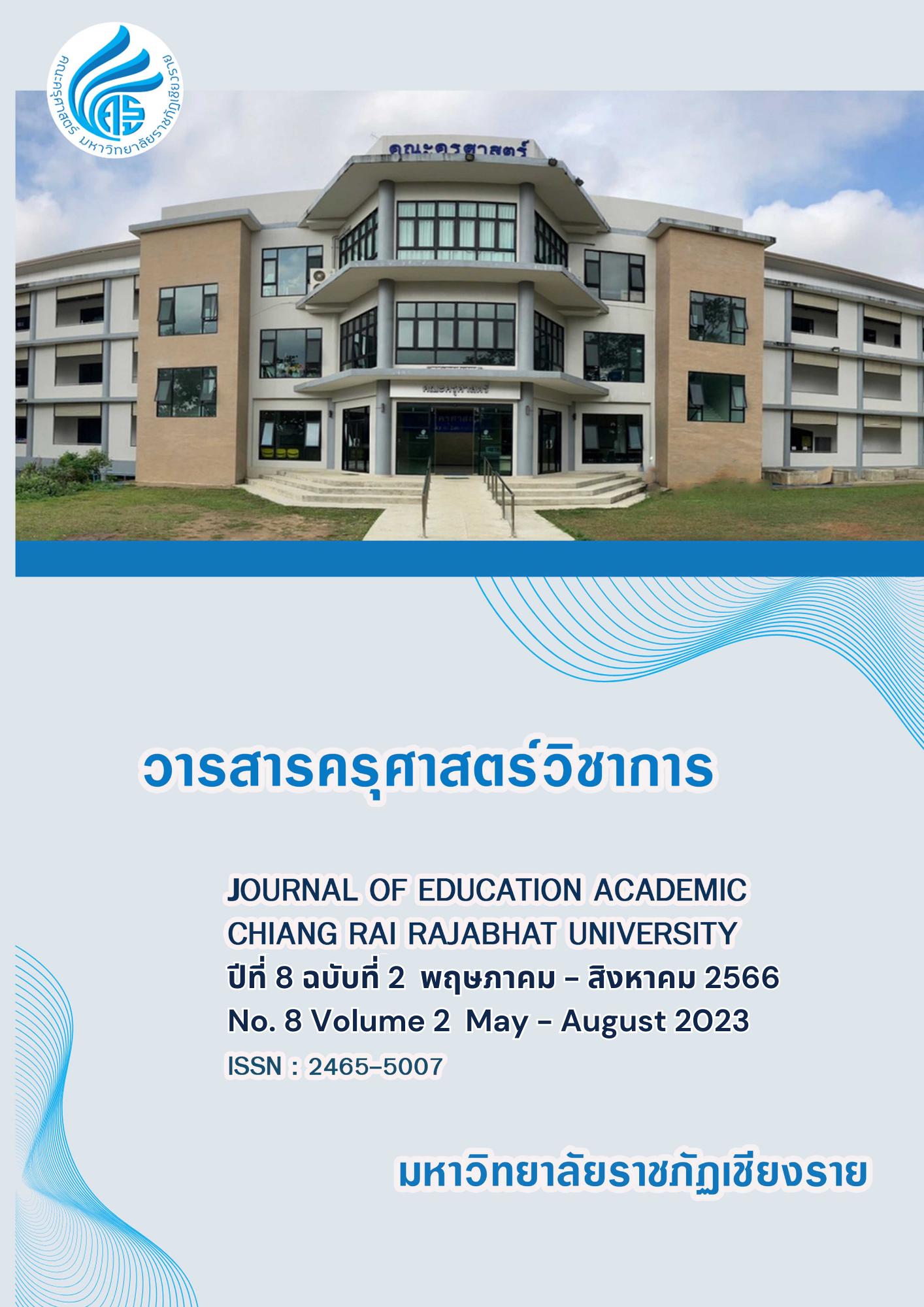การศึกษาความเข้าใจเชิงมโนทัศน์ทางคณิตศาสตร์ เรื่อง ปริซึมและทรงกระบอกโดยใช้โปรแกรม Geogebra ประกอบการจัดการเรียนรู้ ตามรูปแบบ 4 MAT สำหรับนักเรียนชั้นมัธยมศึกษาปีที่ 2
คำสำคัญ:
ความเข้าใจเชิงมโนทัศน์ทางคณิตศาสตร์, ปริซึมและทรงกระบอก, โปรแกรม Geogebraบทคัดย่อ
การวิจัยนี้มีวัตถุประสงค์เพื่อศึกษาความเข้าใจเชิงมโนทัศน์ทางคณิตศาสตร์ เรื่องปริซึมและทรงกระบอกของนักเรียนโดยใช้โปรแกรม Geogebra ประกอบการจัดการเรียนรู้ตามรูปแบบ 4 MAT กลุ่มเป้าหมายใช้ในการวิจัย คือ นักเรียนชั้นมัธยมศึกษาปีที่ 2 โรงเรียนบ้านนาบอน อำเภอคำม่วง จังหวัดกาฬสินธุ์ จำนวน 26 คน โดยวิธีการได้มาจากการเลือกแบบเจาะจง เครื่องมือที่ใช้ในการวิจัย คือ แผนการจัดการเรียนรู้โดยใช้โปรแกรม Geogebra ประกอบการจัดการเรียนรู้ตามรูปแบบ 4 MAT เรื่อง ปริซึมและทรงกระบอกและแบบทดสอบวัดความเข้าใจ เรื่องปริซึมและทรงกระบอก หลังใช้โปรแกรม Geogebra ประกอบการจัดการเรียนรู้ตามรูปแบบ 4 MAT ผลการวิจัยพบว่า (1) นักเรียนสร้างความคิดรวบยอดเชิงมโนภาพซึ่งเป็นความเข้าใจในระดับการจัดกระทำโดยที่นักเรียนแปลความหมายจากข้อมูลโดยการสังเกต และนำความรู้เดิมมาใช้ ความเข้าใจในระดับการจัดกระทำถูกพัฒนาเป็นระดับกระบวนการ ซึ่งเป็นการอธิบาย เปรียบเทียบ สะท้อนสิ่งที่สังเกตได้จากภาพเคลื่อนไหวบนหน้าจอและมีการสร้างความคิดรวบยอดในระดับที่สูงขึ้น ซึ่งเป็นความเข้าใจในระดับโครงสร้างต่อไป (2) ในการทำกิจกรรม ใบงานและทำแบบทดสอบหลังเรียนในแต่ละกิจกรรม พบว่า นักเรียนเกิดความคิดรวบยอดเชิงมโนภาพซึ่งเป็นความเข้าใจในระดับการจัดกระทำ (Action) ระดับกระบวนการ (Process)และระดับโครงสร้าง (Structure) และแก้ไขปัญหาต่างๆ ได้ดีเพื่อสร้างความเข้าใจในการเรียนรู้
เอกสารอ้างอิง
กระทรวงศึกษาธิการ. (2560). หลักสูตรแกนกลางการศึกษาขั้นพื้นฐาน2551. กรุงเทพ: คุรุสภาลาดพร้าว.
ชัญญา อุทิศ. (2557). ผลการจัดกิจกรรมการเรียนเรื่อง "กำหนดการเชิงเส้น" ที่ส่งเสริมกระบวนการทางคณิตศาสตร์ โดยใช้โปรแกรม GeoGebra ของนักเรียนชั้นมัธยมศึกษาปีที่ 6 โรงเรียนสมุทรสาครบูรณะ จังหวัด สมุทรสาคร. กรุงเทพ: มหาวิทยาลัยเกษตรศาสตร์.
ชูศรี วงศ์รัตนะ. (2560). ยเทคนิคการใช้สถิติเพื่อการวิจัย. อมรการพิมพ์.
พงศักดิ์ วุฒิสันต์. ( 2560). GeoGeobraอีกทางเลือกหนึ่งที่น่าสนใจของครูคณิตศาสตร์. สสวท 41(181), 13-14.
พงศักดิ์ วุฒิสันต์. (2556). GeoGebra อีกทางเลือกหนึ่งที่น่าสนใจของครูคณิตศาสตร์. นิตยาสาร สสวท, 13-16.
วิจารณ์ พาณิช. (2555). วิธีสร้างการเรียนรู้เพื่อศิษย์ ในศตวรรษที่ 21 . กรุงเทพ: มูลนิธิสอศรี-สฤษดิ์.
สุวิทย์ มูลคำ, และ อรทัย มูลคำ. (2545). 21 วิธีจัดการเรียนรู้:เพื่อพัฒนากระบวนการคิด (พิมพ์ครั้งที่ 10). กรุงเทพ: ภาพพิมพ์.
อรอุมา ไชโยธา. (2547). "การพัฒนาชุดการเรียนคณิตศาสตร์ด้วยตนเองแบบสืบสวนสอบสวนที่ใช้การ์ตูนประกอบ เรื่องระบบจำนวนเต็ม ชั้นมัธยมศึกาปีที่ 2". สารนิพนธ์ปริญญาการศึกษามหาบัณฑิต สาขาวิชาการมัธยมศึกษา มหาวิทยาลัยศรีนครินทรวิโรฒ.
Dubinsky E. (1991). Reflective abstraction in advance mathematical thinking. Advance Mathematical Think-ing, 95-123.
ดาวน์โหลด
เผยแพร่แล้ว
ฉบับ
ประเภทบทความ
สัญญาอนุญาต
ลิขสิทธิ์ (c) 2023 วารสารครุศาสตร์วิชาการ มหาวิทยาลัยราชภัฏเชียงราย

อนุญาตภายใต้เงื่อนไข Creative Commons Attribution-NonCommercial-NoDerivatives 4.0 International License.






